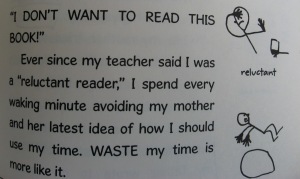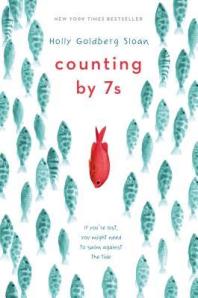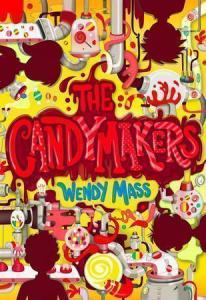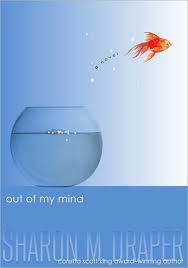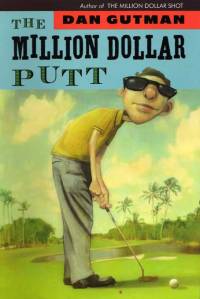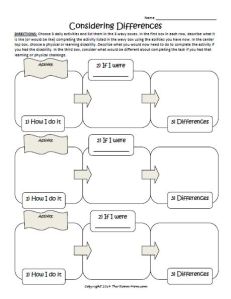What features will these books have?
- The book is written in 1st person, and the speaker has a conversational "kid-speak" voice (very casual).
- The main character is usually not a popular kid at school and has social dilemmas.
- Most books have a graphic element to them. They include doodles and cartoon drawings in the margins and/or images that make the page look like a piece of notebook paper. They often have fun fonts.
- The main character is usually a reluctant reader or a struggling student in some way.
- There is a lot of white space on the page, and it is easy to finish the book quickly.
- And here is my final little observation. The majority of the books have a male main character-- especially the ones targeted at 3rd+ grade levels.
- The Strange Case of the Origami Yoda series by Tom Angleberger
- The Great Hamster Massacre series by Katie Davies
- I Funny: a Middle School Story series by James Patterson
- What the Dog Said by Randi Reisfeld
- The Creature From My Closet series by Obert Skye
- My Life as a Book series by Janet Tashjian
- Justin Case series by Rachel Vail
- Stick Dog series by Tom Watson
- Timmy Failure series by Stephen Pastis
- Love That Dog by Sharon Creech (click for novel unit)
- Hate That Cat by Sharon Creech (click for novel unit)
- Diary of a Worm series by Doreen Cronin (picture book)
Here are a few additional book recommendations that are in a letter style rather than a journal or diary format.
- Dying to Meet You series by Kate Klise (click for novel unit)
- Regarding The Fountain series by Kate Klise
- Letters from Camp by Kate Klise
- The Naked Mole-Rat Letters by Mary Amato
- Sarah, Plain and Tall by Patricia MacLachlan (click for novel unit)
- Dear Mr. Henshaw by Beverly Cleary
- The Gardener by Sarah Stewart (picture book, click for activities)

After reading a book that has a letter/diary component to them, review parts of a letter and write to the author of the book. My students and I write one author as a group at the beginning of the year. We research the author's contact information together and send a batch of letters. After that, I use the project as an early finisher activity. If students need an independent activity, they hunt down an author's e-mail address, physical address, or publisher's address and create a letter to the author. We send and receive AUTHOR LETTERS all year and post the letters in the classroom. It is a great way to motivate reading.
Another easy classroom activity is to have students write from the point of view of a main character and prepare an additional diary entry or letter that could be in the story. The students can choose to add their entry to the beginning, middle, or end of the story. The additional writing should address a question or problem that the story left unanswered, so the students have an opportunity to draw conclusions based on the text.


